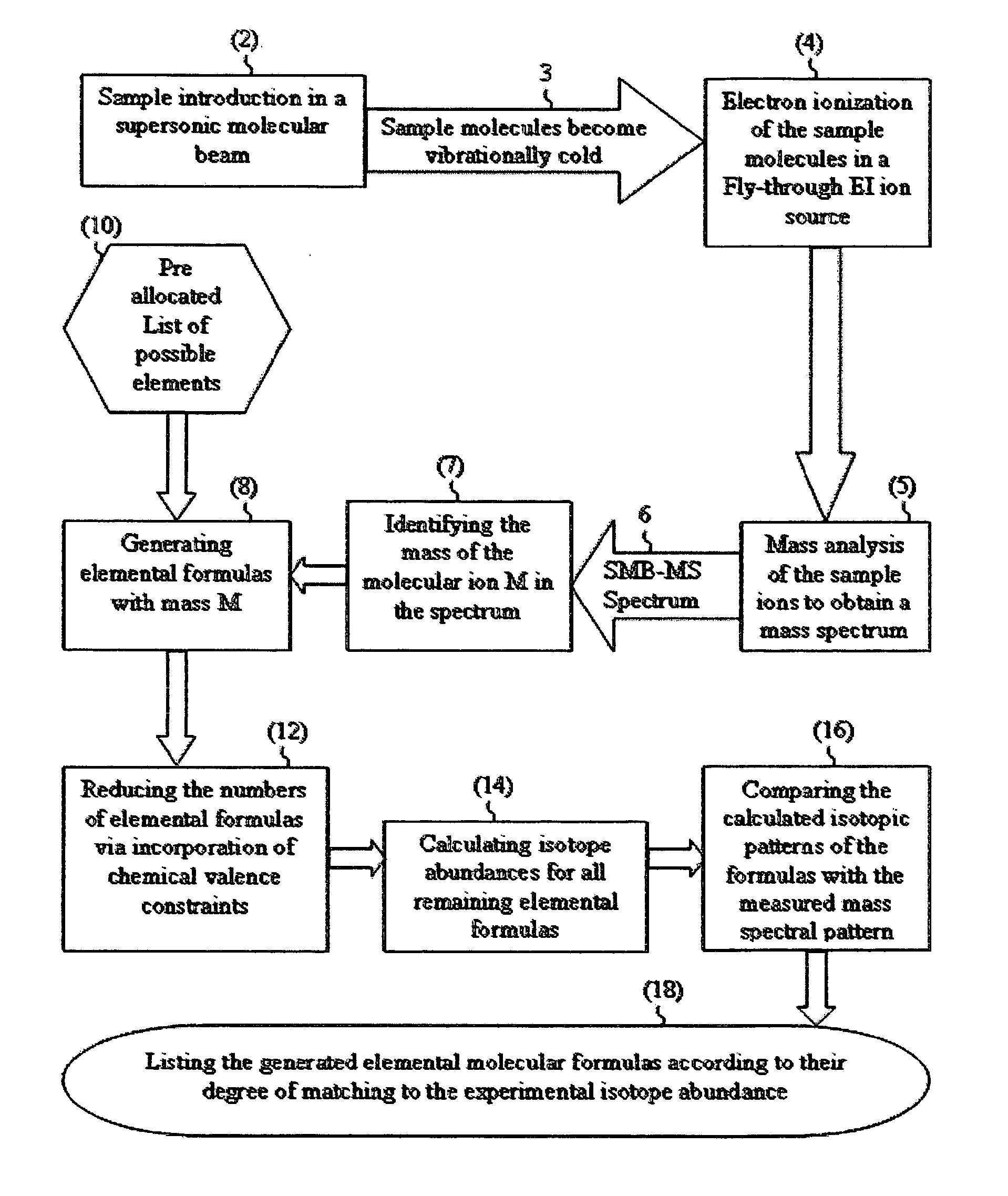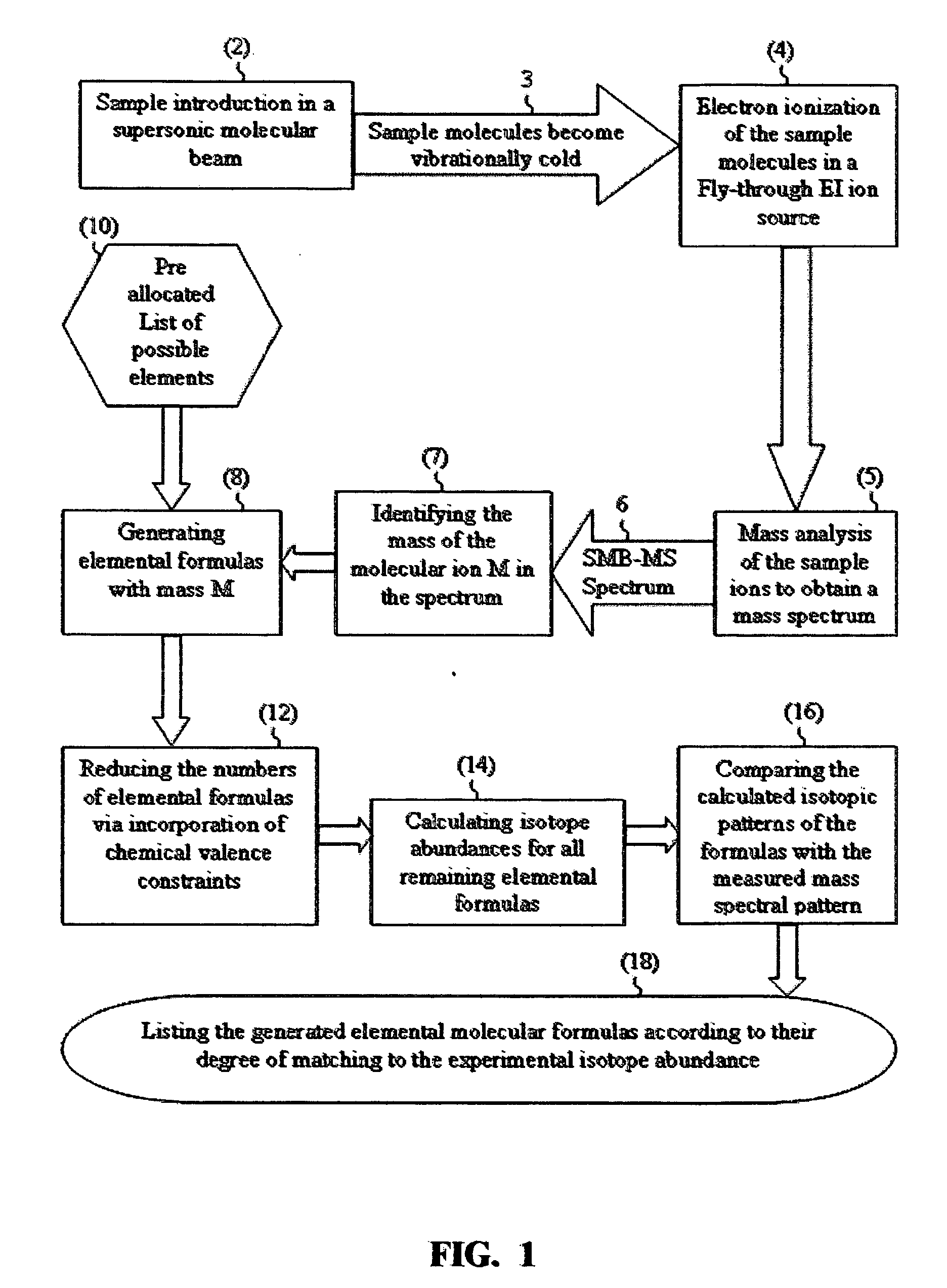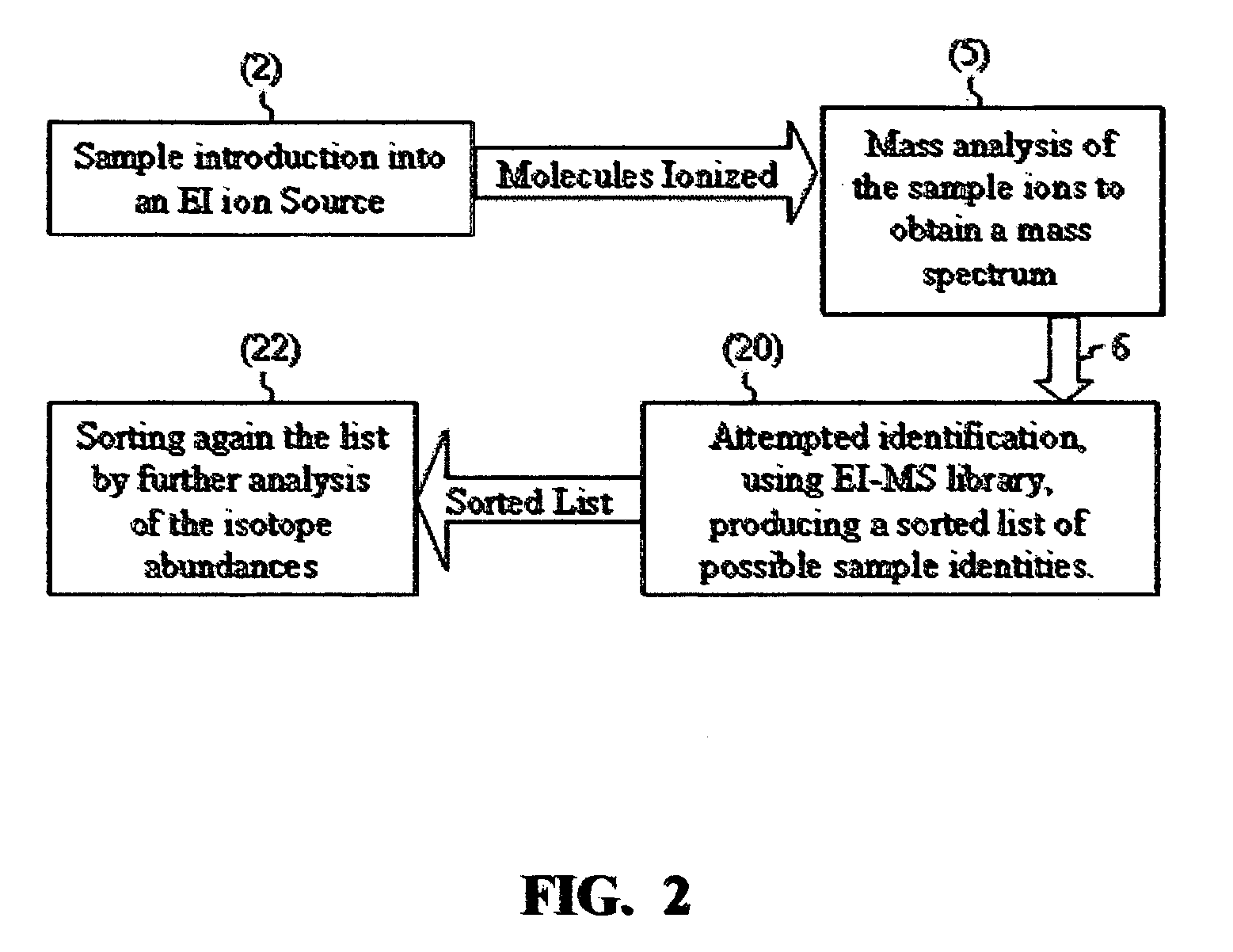Mass spectrometric based method for sample identification
a mass spectrometry and sample technology, applied in chemical methods analysis, isotope separation, particle separator tubes, etc., can solve the problems of library failure in sample identification, inability to trust sample identification through libraries alone, and difficulty in identifying samples with ms libraries
- Summary
- Abstract
- Description
- Claims
- Application Information
AI Technical Summary
Benefits of technology
Problems solved by technology
Method used
Image
Examples
examples
[0038] The IAA method according to this application will be further explained by way of non-limiting examples with a few real sample compounds. The IAA methods described above were implemented in an IAA software that automatically performs IAA. The following are a few typical results:
[0039] A mixture of 9 pesticides including dimethoate (C5H12NO3PS2) at 10 μg / ml concentration was analyzed with GC-MS with SMB. The library identified dimethoate as the first hit with 725 (out of 999) matching factor and 93% claimed probability of identification.
[0040] When the experimental mass spectrum of dimethoate was analyzed by the IAA method (without any correlation with the library), the IAA software automatically identified the molecular ion in the mass spectrum at m / z=229 and automatically downloaded the relative abundances of the six isotopomers normalized to m / z=229 as 100%, m / z=230 as 7.62%, m / z=231 as 9.96%, m / z=232 as 0.93%, m / z=233 as 0.39% and m / z=234 as 0.07%. These isotope abundance...
PUM
 Login to View More
Login to View More Abstract
Description
Claims
Application Information
 Login to View More
Login to View More - R&D
- Intellectual Property
- Life Sciences
- Materials
- Tech Scout
- Unparalleled Data Quality
- Higher Quality Content
- 60% Fewer Hallucinations
Browse by: Latest US Patents, China's latest patents, Technical Efficacy Thesaurus, Application Domain, Technology Topic, Popular Technical Reports.
© 2025 PatSnap. All rights reserved.Legal|Privacy policy|Modern Slavery Act Transparency Statement|Sitemap|About US| Contact US: help@patsnap.com



